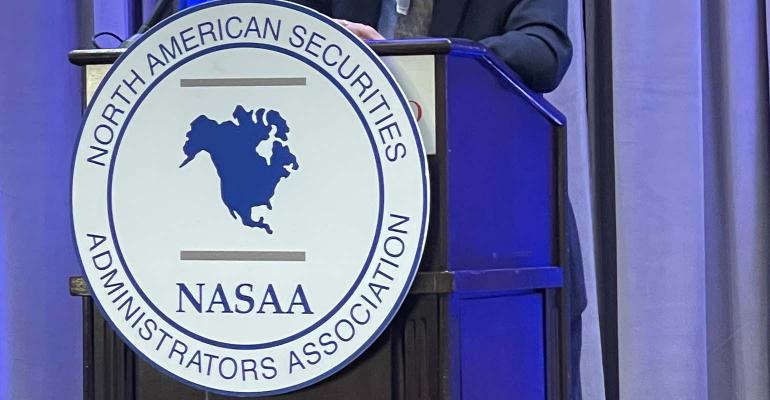State securities regulators said investors should be cautious when considering suspect cryptocurrency and digital asset offerings, with the North American Securities Administrators Association calling fraudulent crypto schemes the “top investor threat” for 2022.
NASAA detailed the findings of a survey with regulators predicting the main threats to investor protection for the coming year. NASAA President and Maryland Securities Commissioner Melanie Senter Lubin said her state office received at least half a dozen calls per week from investors who’d been fleeced on crypto schemes.
“People are being scammed left and right thinking they’re buying cryptocurrency. They get emails, they click on the email,” she said. “It’s a very similar approach as there was when there were boiler rooms, but now it’s hitting a button and you can get to thousands of people.”
According to Enforcement Section Committee Co-Chair and Alabama Securities Commission Director Joseph Borg, NASAA used data from its previous year’s enforcement report with answers from a shorter follow-up survey to create an “early-warning system” for the public, regulators and policymakers. The survey closed on Dec. 22 of last year, with 46 of the 67 states and provinces within the association’s jurisdiction responding.
About 35% of respondents cited investment schemes tied to crypto and digital assets as the top threat, according to Joseph Rotunda, NASAA’s Enforcement Section Committee vice-chair and Texas State Securities Board Enforcement Division director. He said bad actors often follow the headlines, sculpting scams using offerings like crypto that have received significant media attention.
Borg and Rotunda both noted that the price and market capitalization of crypto had “exploded” during the pandemic, and regulators were seeing more COVID-related scams using digital currencies. Rotunda cautioned that the technological barriers for investors to enter the crypto market had lowered in recent years. Now, investors can be trading crypto on their phones in a matter of minutes.
“At the same time, there’s been a reduction in technological barriers for the bad actors,” he said. “And that’s dangerous. It’s a lot easier to spoof a website now. You do not need the technological know-how you did five, six or seven years ago.”
Fraudulent offerings related to promissory notes were the second-highest potential threat, with 28% of respondents identifying it as a top concern. Scams using the internet and social media platforms came in third with 10% of respondents, while schemes involving self-directed IRAs (SDIRAs) came in fourth, with 8% of respondents seeing it as a problem for investors. Regulators noted that while SDIRAs were not often fraudulent, they’re often used to obfuscate con artists’ schemes.
Promissory notes and SDIRAs were constant issues for state securities regulators, according to Rotunda; last fall, Borg revealed that the number of state enforcement actions focused on SDIRAs more than doubled from 2019 to 2020, speculating that the isolation from the pandemic left investors vulnerable to scams. Cryptocurrencies were also a focus for state regulators in 2020, with Rotunda reporting 125 total investigations that year compared with 67 the prior year.
According to Borg, the only limit for crypto scams was the “imagination of the con artist,” with regulators seeing false websites, false return statements and secret false messages for investors on how to invest in crypto, among other fraudulent tools. Lubin and Borg both said regulators typically did not see scams perpetuated by registered advisors who have made efforts to come into compliance, but Borg noted that the dollars lost to scams were funds not finding their way into the legitimate advisory industry.
In her first address as NASAA president last year, Lubin, who was named a WealthManagement.com Ten to Watch in 2022, had said that digital asset platforms were not “inherently bad” but could be used to manipulate investors into harmful practices.
In speaking about the 2022 top threat predictions, Lubin said existing state and federal regulatory frameworks can adequately combat digital asset scams, though she acknowledged that there could be a need to tweak “around the margins” of existing regulations.
“A lot of people involved in the crypto space like to say ‘it’s confusing, we don’t know what to do with regulation. It doesn’t fit us,’” Lubin said. “But it really does fit them; they’re making choices not to come into compliance, and there are some firms that are trying to come into compliance."

